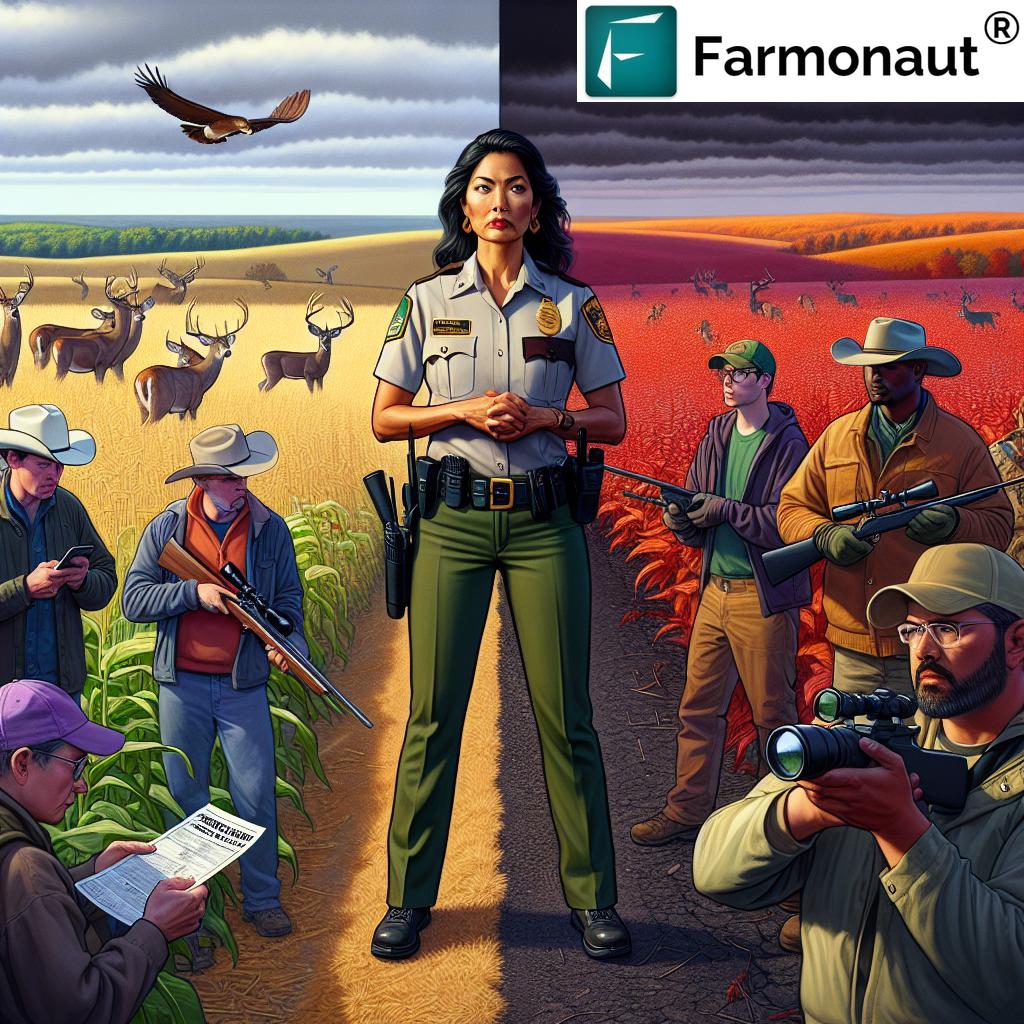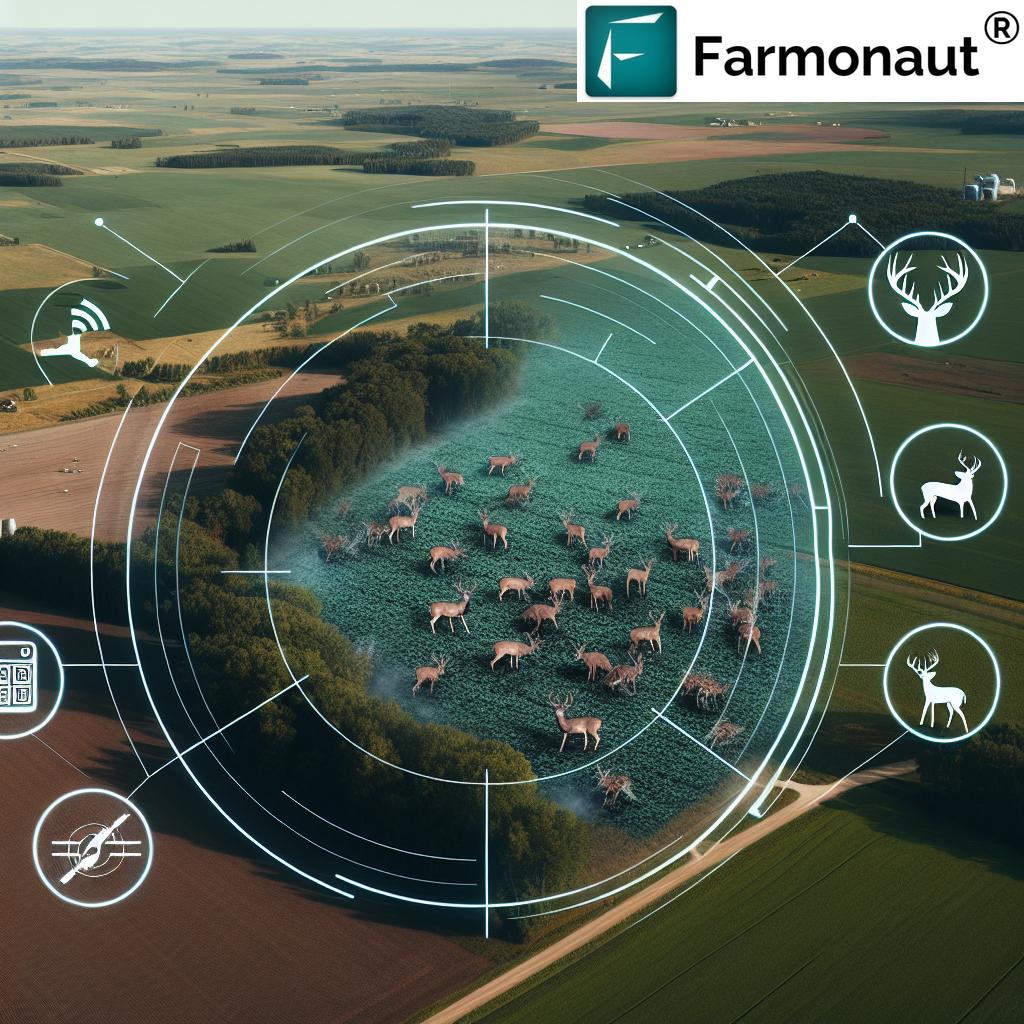Unleashing Controversy: Minnesota’s Deer Hunting Crisis Pits Farmers Against Hunters in Epic Battle for Wildlife Control
The Minnesota deer hunting controversy has erupted into a full-blown crisis, setting the stage for an unprecedented showdown between farmers and hunters. At the heart of this conflict lies a complex web of issues surrounding crop damage permits, wildlife conservation, and the delicate balance between agricultural crop protection and deer population control.

The Epicenter: Deer Permit Area 274
The controversy has reached a boiling point in Deer Permit Area 274, where the stark contrast between farmers’ and hunters’ rights has become glaringly apparent. While farmers in this region can harvest numerous deer to protect their crops through the deer depredation program, hunters face increasingly stringent restrictions on their activities.
This imbalance has sparked outrage among the hunting community, who are deeply concerned about the potential impact on deer populations and long-term wildlife conservation efforts. The situation underscores the complex challenges faced by the DNR wildlife management team in maintaining equilibrium between competing interests.
The Crop Damage Permits Debate
At the core of this farmer-hunter conflict in wildlife control are the controversial crop damage permits. These permits, issued by the Department of Natural Resources (DNR), allow farmers to take matters into their own hands when it comes to protecting their livelihoods from deer-related damage.
However, the crop damage permits impact on deer population has raised serious concerns among hunters and conservationists alike. Critics argue that the current system may be leading to an unsustainable reduction in deer numbers, potentially disrupting the delicate ecological balance of Minnesota’s diverse landscapes.
DNR Under Fire: Oversight and Accountability
The DNR’s role in overseeing the crop damage permit system has come under intense scrutiny. Recent violations of permit regulations have only served to fuel the flames of controversy, raising questions about the effectiveness of current oversight mechanisms.
These DNR wildlife management challenges highlight the need for a comprehensive review of existing policies and procedures. As the debate intensifies, it becomes increasingly clear that finding a solution will require a delicate balancing act between the needs of farmers, the rights of hunters, and the imperatives of wildlife conservation.
Searching for Solutions: A Legislative Approach
In response to the growing crisis, lawmakers are exploring alternative solutions to address the Minnesota hunting regulations dispute. Some of the proposals under consideration include:
- Easing hunting regulations to allow for increased antlerless deer harvest
- Implementing a farmer compensation program for crop damage
- Revising the deer depredation program to ensure more equitable distribution of permits
- Enhancing DNR oversight and enforcement capabilities
These potential solutions aim to strike a balance between the needs of farmers and the concerns of hunters while ensuring the long-term sustainability of Minnesota’s deer population.

The Bigger Picture: Balancing Agriculture and Conservation
The ongoing controversy surrounding Minnesota deer hunting serves as a microcosm of the broader challenges faced by states across the country in balancing agriculture and conservation. This delicate equilibrium requires careful consideration of multiple factors, including:
- Economic impact of crop damage on farmers
- Ecological importance of maintaining healthy deer populations
- Cultural significance of hunting traditions
- Public safety concerns related to deer-vehicle collisions
As stakeholders grapple with these complex issues, it becomes increasingly clear that a one-size-fits-all approach is unlikely to provide a satisfactory solution.
The Role of Technology in Wildlife Management
In the quest for innovative solutions to the Minnesota deer hunting controversy, technology may play a crucial role. Advanced tools and platforms, such as those offered by Farmonaut, could provide valuable insights into wildlife movement patterns, crop health, and environmental factors affecting both agriculture and conservation efforts.
By leveraging satellite imagery, weather data, and AI-powered analytics, stakeholders can make more informed decisions about deer population control and agricultural crop protection. This data-driven approach could help bridge the gap between farmers and hunters, fostering a more collaborative approach to wildlife management.
Explore Farmonaut’s cutting-edge solutions:
The Path Forward: Collaboration and Compromise
As the deer depredation program debate rages on, it’s becoming increasingly clear that finding a resolution will require unprecedented levels of collaboration and compromise between all stakeholders. This includes:
- Farmers seeking to protect their livelihoods
- Hunters advocating for sustainable wildlife populations
- Conservationists focused on long-term ecological health
- DNR officials tasked with managing complex wildlife systems
- Lawmakers responsible for crafting fair and effective regulations
By fostering open dialogue and considering diverse perspectives, Minnesota has the opportunity to develop a model for wildlife management that could serve as an example for other states facing similar challenges.
The Future of Minnesota Deer Hunting
As the debate over crop damage permits and hunting regulations continues to evolve, the future of Minnesota deer hunting remains uncertain. However, this controversy has undoubtedly sparked a much-needed conversation about the complex relationships between agriculture, conservation, and recreational hunting in the state.
By addressing these challenges head-on and embracing innovative solutions, Minnesota has the potential to emerge from this crisis with a more robust, sustainable approach to wildlife management that serves the needs of all stakeholders.
Conclusion: A Call for Balanced Action
The Minnesota deer hunting controversy serves as a stark reminder of the delicate balance required in managing natural resources. As the state grapples with this complex issue, it’s clear that finding a solution will require creativity, compromise, and a commitment to long-term sustainability.
By leveraging technology, fostering collaboration, and embracing innovative approaches to wildlife conservation, Minnesota has the opportunity to turn this crisis into a catalyst for positive change. The outcome of this debate will not only shape the future of deer hunting in the state but also set a precedent for how we approach the critical task of balancing agriculture and conservation in Minnesota and beyond.
For more information on how technology can aid in wildlife management and agricultural protection, visit Farmonaut’s API or explore their API Developer Docs.


